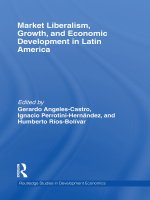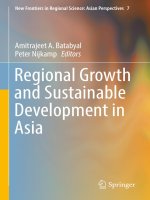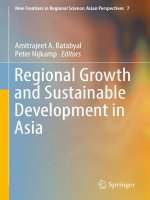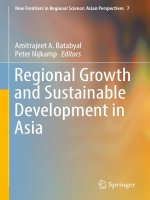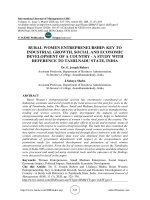Economic growth and economic development 80
Bạn đang xem bản rút gọn của tài liệu. Xem và tải ngay bản đầy đủ của tài liệu tại đây (156.15 KB, 1 trang )
Introduction to Modern Economic Growth
k(t+1)
45°
k*
0
k(0)
k*
k’(0)
k(t)
Figure 2.7. Transitional dynamics in the basic Solow model.
comparative statics. Yet, so far, it has no growth. The steady state is the point
at which there is no growth in the capital-labor ratio, no more capital deepening
and no growth in output per capita. Consequently, the basic Solow model (without
technological progress) can only generate economic growth along the transition path
when the economy starts with k (0) < k ∗ . This growth is not sustained, however:
it slows down over time and eventually comes to an end. We will see in Section
2.6 that the Solow model can incorporate economic growth by allowing exogenous
technological change. Before doing this, it is useful to look at the relationship
between the discrete-time and continuous-time formulations.
2.4. The Solow Model in Continuous Time
2.4.1. From Difference to Differential Equations. Recall that the time
periods could refer to days, weeks, months or years. In some sense, the time unit
is not important. This suggests that perhaps it may be more convenient to look at
66
